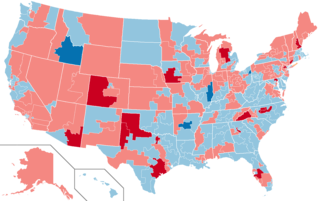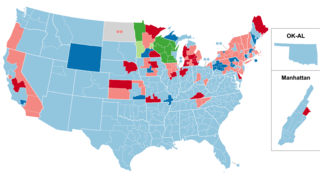| Part of the Politics series |
 |
|---|
| |
The 1975 Italian local elections were held on 15 and 16 June. [1] The elections were held in 6,345 municipalities and 86 provinces.
| Part of the Politics series |
 |
|---|
| |
The 1975 Italian local elections were held on 15 and 16 June. [1] The elections were held in 6,345 municipalities and 86 provinces.
| Party | votes | votes (%) | seats | |
|---|---|---|---|---|
| Christian Democracy (DC) | 2,855,759 | 32.0 | 1,433 | |
| Italian Communist Party (PCI) | 2,753,650 | 30.9 | 1,110 | |
| Italian Socialist Party (PSI) | 1,108,930 | 12.4 | 500 | |
| Italian Social Movement (MSI) | 729,016 | 8.2 | 274 | |
| Italian Democratic Socialist Party (PSDI) | 562,816 | 6.3 | 229 | |
| Italian Republican Party (PRI) | 404,721 | 4.6 | 144 | |
| Italian Liberal Party (PLI) | 302,938 | 3.4 | 86 | |
| Proletarian Democracy (DP) | 80,763 | 0.9 | 10 | |
| Proletarian Unity Party (PDUP) | 19,133 | 0.2 | 7 | |
| Others | 86,186 | 1.0 | 37 | |
| Total | 8,914,500 | 100 | 3,830 |
| Party | votes | votes (%) | seats |
|---|---|---|---|
| Christian Democracy (DC) | 10,732,902 | 34.8 | 946 |
| Italian Communist Party (PCI) | 10,101,761 | 32.7 | 860 |
| Italian Socialist Party (PSI) | 3,933,700 | 12.7 | 330 |
| Italian Social Movement (MSI) | 2,093,237 | 6.8 | 161 |
| Italian Democratic Socialist Party (PSDI) | 1,800,127 | 5.8 | 142 |
| Italian Republican Party (PRI) | 1,048,868 | 3.4 | 73 |
| Italian Liberal Party (PLI) | 846,851 | 2.7 | 43 |
| Proletarian Democracy (DP) | 78,688 | 0.3 | 1 |
| Proletarian Unity Party (PDUP) | 57,337 | 0.2 | 3 |
| Sardinian Action Party (PSd'Az) | 21,960 | 0.1 | 2 |
| Others | 155,256 | 0.5 | 4 |
| Total | 30,870,687 | 100 | 2,565 |

The 2004 United States House of Representatives elections were held on November 2, 2004 to elect all 435 seats of the chamber. It coincided with the re-election of President George W. Bush as well as many Senate elections and gubernatorial elections. Prior to the election in the 108th Congress, Republicans held 227 seats, Democrats held 205, with two Republican vacancies and one independent. As a result of this election, the 109th Congress began composed of 232 Republicans, 201 Democrats, one independent, and one vacancy.

The 1920 United States Senate elections were elections for the United States Senate that coincided with the presidential election of Warren G. Harding. The 32 seats of Class 3 were contested in regular elections, and special elections were held to fill vacancies. Democrat Woodrow Wilson's unpopularity allowed Republicans to win races across the country, winning ten seats from the Democrats and providing them with an overwhelming 59-to-37 majority. The Republican landslide was so vast that Democrats lost over half of the seats that were contested this year and failed to win a single race outside the South.

The 1984 United States House of Representatives elections was an election for the United States House of Representatives on November 6, 1984, to elect members to serve in the 99th United States Congress. They coincided with the re-election of President Ronald Reagan in a landslide. This victory also yielded gains for Reagan's Republican Party in the House, where they picked up a net of sixteen seats from the Democratic Party. Despite Reagan's extremely large electoral victory, the Democrats nonetheless retained a commanding majority in the House and actually gained seats in the Senate. These elections were the last until 2020 when a member of a political party other than the Democrats, Republicans, or an independent had one or more seats in the chamber.

The 1956 United States House of Representatives elections was an election for the United States House of Representatives to elect members to serve in the 85th United States Congress. They were held for the most part on November 6, 1956, while Maine held theirs on September 10. They coincided with the re-election of President Dwight D. Eisenhower.

The 1944 United States House of Representatives elections were elections for the United States House of Representatives to elect members to serve in the 79th United States Congress. They were held for the most part on November 7, 1944, while Maine held theirs on September 11. These elections coincided with President Franklin D. Roosevelt's re-election to a record fourth term.

The 1940 United States House of Representatives elections were elections for the United States House of Representatives to elect members to serve in the 77th United States Congress. They were held for the most part on November 5, 1940, while Maine held theirs on September 9. They coincided with President Franklin D. Roosevelt's re-election to an unprecedented third term. His Democratic Party narrowly gained seats from the opposition Republican Party, cementing their majority. However, the election gave firm control of the US House of Representatives and Senate to the New Dealers once again, as Progressives dominated the election.

The 1936 United States House of Representatives elections were elections for the United States House of Representatives to elect members to serve in the 75th United States Congress. They were held for the most part on November 3, 1936, while Maine held theirs on September 14. They coincided with President Franklin D. Roosevelt's landslide re-election. Roosevelt's Democratic Party gained twelve net seats from the Republican Party, bringing them above a three-fourths majority. This was the largest majority since Reconstruction, as the last time a party won so decisively was in 1866. This is the last time any party held 3/4ths of all House seats.

The 1934 United States House of Representatives elections were elections for the United States House of Representatives to elect members to serve in the 74th United States Congress. They were held for the most part on November 6, 1934, while Maine held theirs on September 10. They occurred in the middle of President Franklin D. Roosevelt's first term. The Democratic Party continued its progress, gaining another 9 net seats from the opposition Republican Party, who also lost seats to the Progressive Party. The Republicans were reduced below one-fourth of the chamber for the first time since the creation of the party. The Wisconsin Progressive Party, a liberal group which allied with the Democrats, also became a force in Wisconsin politics.

The 1926 United States House of Representatives elections were elections for the United States House of Representatives to elect members to serve in the 70th United States Congress. They were held for the most part on November 2, 1926, while Maine held theirs on September 13. They occurred in the middle of President Calvin Coolidge's second term. Coolidge's Republican Party lost seats to the opposition Democratic Party, but it retained a majority. The most pressing national matters at the time were fragmented, generally related to government's relationship to business or to providing social aid. However, no predominant issue was able to cast a shadow over the election. The small, populist Farmer–Labor Party also held two seats following the election.
The 1878–79 United States House of Representatives elections were held on various dates in various states between June 3, 1878 and September 3, 1879. Each state set its own date for its elections to the House of Representatives before or after the first session of the 46th United States Congress convened on March 18, 1879. Elections were held for all 293 seats, representing 38 states. This was the last election cycle that at least one state held its regular congressional election in an odd-numbered year.

The 1868–69 United States House of Representatives elections were held on various dates in various states between June 1, 1868 and August 2, 1869. Each state set its own date for its elections to the House of Representatives before or after the first session of the 41st United States Congress convened on March 4, 1869. They coincided with the 1868 United States presidential election, which was won by Ulysses S. Grant. Elections were held for all 243 seats, representing 37 states. All of the former Confederate states were represented in Congress for the first time since they seceded from the Union.
The 1850–51 United States House of Representatives elections were held on various dates in various states between August 5, 1850 and November 4, 1851. Each state set its own date for its elections to the House of Representatives before the first session of the 32nd United States Congress convened on December 1, 1851. Elections were held for all 233 seats, representing 31 states.
The 1848–49 United States House of Representatives elections were held on various dates in various states between August 1848 and November 1849. Each state set its own date for its elections to the House of Representatives before the first session of the 31st United States Congress convened on December 3, 1849. The new state of Wisconsin elected its first representatives, and California also held its first congressional elections before officially achieving statehood in 1850, increasing the size of the House to 233 seats.
The 1846–47 United States House of Representatives elections were held on various dates in various states between August 2, 1846 and November 2, 1847. Each state set its own date for its elections to the House of Representatives. 228 elected members representing 29 states took their seats when the first session of the 30th United States Congress convened December 6, 1847. The new states of Iowa and Texas elected their first representatives during this election cycle. These elections were held during President James K. Polk's term.
The 1844–45 United States House of Representatives elections were held on various dates in various states between July 1, 1844 and November 4, 1845. Each state set its own date for its elections to the House of Representatives. 224 elected members representing 27 states took their seats when the first session of the 29th United States Congress convened on December 1, 1845. The new state of Florida elected its first representative during this election cycle, while one vacancy in New Hampshire's delegation remained unfilled for the duration of the 29th Congress.
The 1842–43 United States House of Representatives elections were held on various dates in various states between August 1, 1842 and November 8, 1843. Each state set its own date for its elections to the House of Representatives before the first session of the 28th United States Congress convened on December 4, 1843. The exception was Maryland, who held theirs so late that they ran into February 1844. These elections occurred during President John Tyler's term. The congressional reapportionment based on the 1840 United States Census unusually decreased the number of House seats, from 242 down to 223.

The 1812–13 United States House of Representatives elections were held on various dates in various states between August 3, 1812 and April 30, 1813. Each state set its own date for its elections to the House of Representatives before the first session of the 13th United States Congress convened on May 24, 1813. They coincided with James Madison being re-elected president.

The 1999 United States elections, which were held on Tuesday, November 2, were off-year elections in which no members of the Congress were standing for election. However, there were three gubernatorial races, state legislative elections in four states, numerous citizen initiatives, mayoral races in several major cities, and a variety of local offices on the ballot.